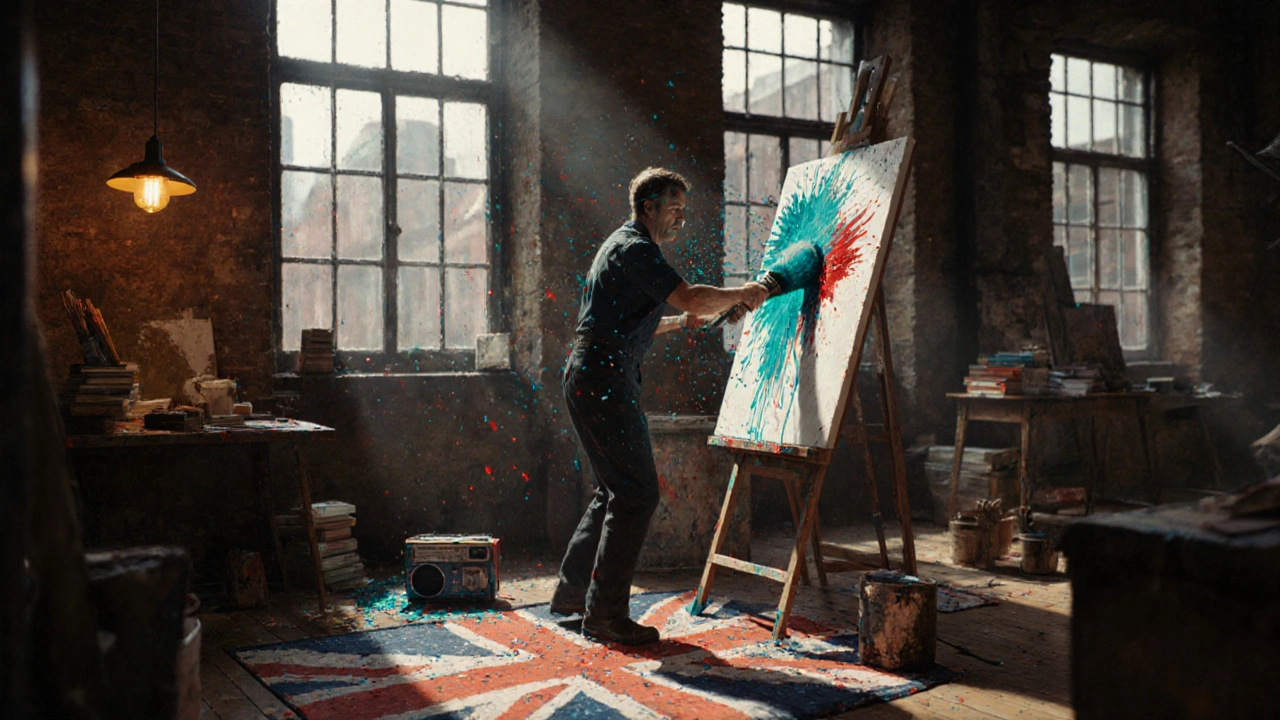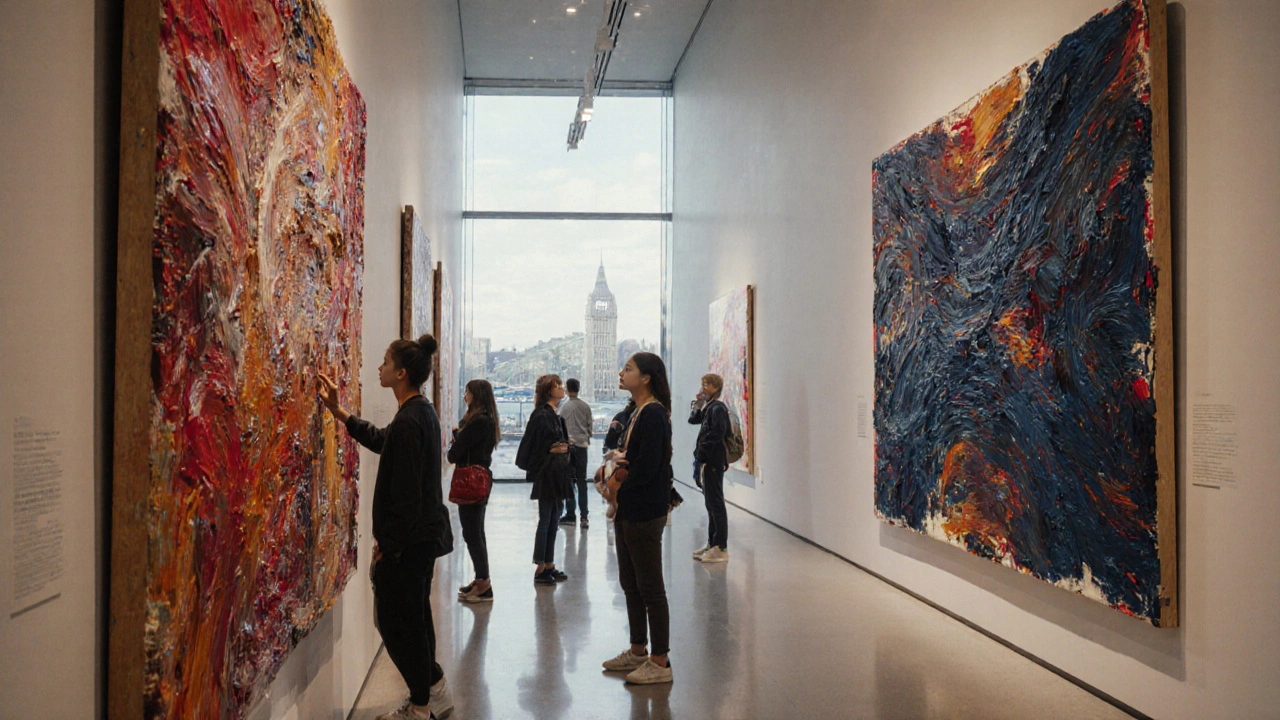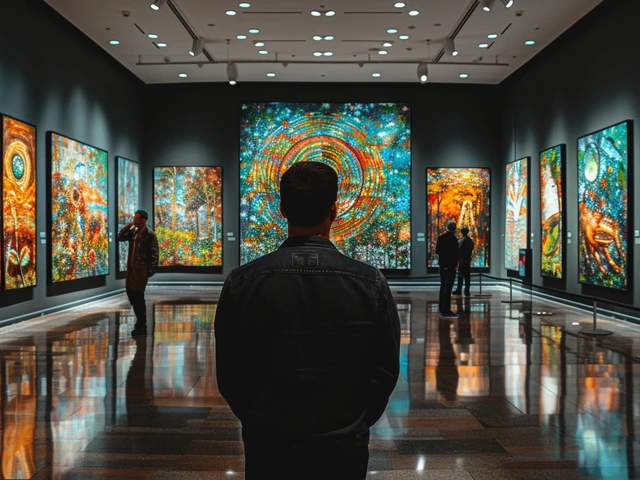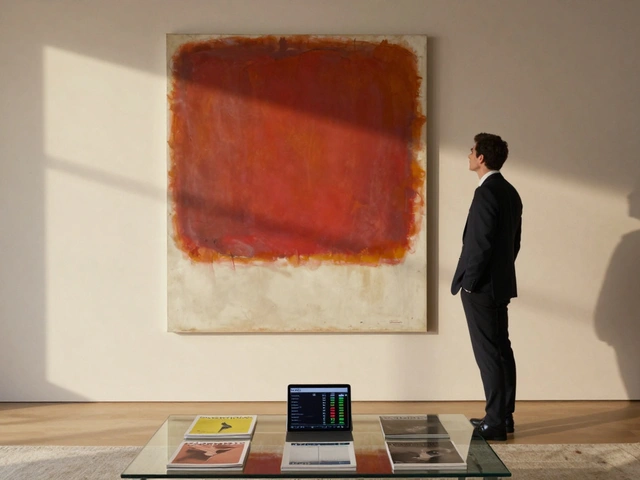Abstract Expressionism Quiz
1. Which city is widely considered the birthplace of Abstract Expressionism?
2. Who coined the term "Action Painting"?
3. Which artist is known for his drip painting technique?
4. What is the name of the sub-style focused on large color fields?
5. In which decade did Abstract Expressionism reach its peak?
Abstract Expressionism is a post‑World WarII American art movement that prioritized spontaneous, large‑scale brushwork and the subconscious mind. It emerged in the late 1940s, quickly becoming the dominant voice in contemporary painting and setting the stage for decades of artistic experimentation.
TL;DR:
- Abstract Expressionism began in New York after WWII, championing spontaneity and emotional intensity.
- Jackson Pollock, Willem de Kooning, and Mark Rothko are its three most iconic figures.
- Action Painting and Color Field Painting are the two defining sub‑styles.
- The movement reshaped museum collections, the global art market, and today’s abstract practices.
Origins and Historical Context
In the aftermath of WorldII, many European artists fled to the United States, bringing avant‑garde ideas that mingled with home‑grown modernism. The New York School formed as a loose network of painters, critics, and poets who met in downtown galleries and coffeehouses. This community, supported by figures like critic CarlWitte and curator Harold Rosenthal, sought to break free from European academic traditions and express the raw energy of a new era.
Economically, the post‑war boom provided unprecedented patronage. Collectors such as Samuel Kramarsky and institutions like the Museum of Modern Art (MoMA) began purchasing large, daring canvases, legitimizing the movement in the eyes of the public.
Key Figures and Their Contributions
Jackson Pollock was a leading American painter famous for his drip technique, where paint is poured or flung onto the canvas from above. His 1948 work "Number1, 1949" exemplifies the physicality of the process, turning the act of painting into a performance.
Willem de Kooning blended aggressive brushstrokes with figurative hints, especially in his "Woman" series. His hybrid style challenged the clean divide between abstraction and representation, influencing later post‑modern painters.
Mark Rothko pursued a radically different path, focusing on luminous color fields that seem to float off the wall. Works like "No. 61 (Brown, Black, Orange)" invite meditation rather than kinetic movement.
Defining Styles: Action Painting and Color Field
Critic Harold Rosenberg coined Action Painting to describe works where the artist’s gestures become the subject itself. This approach emphasizes the canvas as an arena for theatrical performance, a concept that resonated with the era’s existential mood.
In contrast, Color Field Painting stripped away gestural marks, focusing on large swaths of unmodulated color. Artists such as Rothko, Barnett Newman, and Helen Frankenthaler used flat, glowing fields to create spiritual contemplation rather than kinetic drama.
Both sub‑styles share a commitment to scale: canvases often exceed 10 feet, demanding viewers to physically engage with the space. This scale also reflected the ambition of post‑war America to assert cultural dominance on a global stage.
Impact on Museums and the Global Art Market
By the early 1960s, MoMA and the Guggenheim Museum had dedicated entire wings to Abstract Expressionist works. Auction records illustrate the financial explosion: a 1990 Pollock sold for $23million, while a Rothko fetched $86million in 2014, setting a new benchmark for post‑war art.
This market success prompted European and Asian collectors to acquire American canvases, spreading the aesthetic beyond the United States. Contemporary galleries in Tokyo, Berlin, and SãoPaulo now host retrospectives that trace the movement’s ripple effects on local abstractions.

Legacy and Contemporary Influence
Today, artists as diverse as Julie Curtis (performance‑based installations) and Mark Bradley (digital abstractions) cite Abstract Expressionism’s emphasis on gesture and emotional honesty as a foundation. Even hip‑hop visual culture borrows the dripping, chaotic aesthetic in album covers and graffiti.
Academic programs continue to teach the movement’s techniques, from Pollock’s use of industrial-grade enamel to Rothko’s color‑mixing calculations, ensuring that new generations can experiment with both materiality and meaning.
Related Concepts and Movements
Understanding Abstract Expressionism also means looking at its cousins: Surrealism’s automatism, which inspired the subconscious approach; the Beat Generation literary movement, which echoed the same anti‑conformist spirit; and later Minimalism, which reacted against the emotional excess of the 1950s by reducing form to pure geometry.
These interconnections illustrate how the movement served as both a culmination of earlier avant‑garde experiments and a springboard for later post‑modern tendencies.
Comparison of Leading Artists
| Artist | Signature Technique | Notable Work | Active Years |
|---|---|---|---|
| Jackson Pollock | Drip & pour (Action Painting) | "Number 1, 1949" | 1936‑1956 |
| Willem de Kooning | Gestural brushwork, figural abstraction | "Woman I" (1950‑52) | 1940‑1970 |
| Mark Rothko | Large color fields, luminous edge | "No.61 (Brown, Black, Orange)" | 1945‑1970 |
| Helen Frankenthaler | Soak-stain technique, Color Field | "Mountains and Sea" (1952) | 1950‑1990 |
| Barnett Newman | Vertical "zips" separating fields | "Vir Heroicus Sublimis" (1950‑53) | 1948‑1970 |
Practical Guide: Experiencing Abstract Expressionism Today
- Visit a major museum (MoMA, Tate Modern) and focus on canvases larger than 8ft; notice how your peripheral vision is drawn into the work.
- Read a primary source: Harold Rosenberg’s 1952 essay "The American Action Painters" to grasp the philosophical underpinnings.
- Try a hands‑on workshop: replicate Pollock’s drip method using acrylics on a canvas the size of a wall.
- Compare with a contemporary analog, such as a digital abstraction by Refik Anadol, to see how the core ideas translate across media.
These steps help you move from passive observation to active understanding, echoing the movement’s original call for personal, embodied experience.
Frequently Asked Questions
What time period does Abstract Expressionism cover?
The movement blossomed from roughly 1945 to the early 1960s, with its peak in the late 1940s and 1950s.
Who are the three most influential Abstract Expressionist artists?
Jackson Pollock, Willem de Kooning, and Mark Rothko are generally regarded as the movement’s leading figures, each representing a distinct approach to abstraction.
How does Action Painting differ from Color Field Painting?
Action Painting focuses on the physical act of painting-dripping, flinging, and gestural marks-while Color Field Painting minimizes gestural marks in favor of large, flat expanses of color that evoke mood.
Why is New York considered the birthplace of Abstract Expressionism?
After WWII, New York’s thriving gallery scene, generous patronage, and influx of European émigrés created a fertile environment for bold experimentation, allowing artists to break away from European dominance.
Can contemporary artists still be considered Abstract Expressionists?
While the original movement ended in the 1960s, its principles-spontaneity, scale, emotional intensity-continue to inspire many modern painters, sculptors, and even digital artists.




